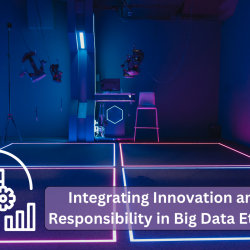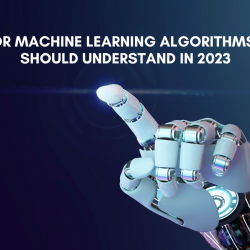What Does the AI (Artificial Intelligence) Decision Tree mean?


Introduction to AI (Artificial Intelligence) Decision Trees
The Artificial Intelligence Decision Tree (AI DT) is an AI algorithm used to classify and predict outcomes. It visualizes data by organizing it into nodes and branches, like a tree. A decision tree consists of various decisions or courses of action, each represented by a node; it then branches from these nodes into sets of rules that result in a prediction or classification.
Root nodes are the first layer of the decision tree, acting as entry points for data. Root nodes are based on the most significant concept in the tree; they then feed information into other nodes, with branches connecting them to form the “tree” structure. Each node contains a decision, such as whether customer income is above or below a certain threshold value. Data flows through the AI DT until it reaches leaf nodes which represent the decision’s predicted outcome or classification.
Decision trees are powerful tools for both classification and prediction purposes when used correctly, they can help you make quick and informed decisions on how to proceed with your Artificial Intelligence project. By understanding what an AI DT entails, you’ll be able to better navigate your project and draw valuable insights from your data.
Types of AI (Artificial Intelligence) Decision Trees
The Artificial Intelligence (AI) Decision Tree is an AI algorithm used to classify data and enable decision making based on features and attributes. It works by creating a structured network of nodes and branches, which essentially categorizes information by breaking down a big problem into smaller chunks. The decision tree is designed to help make predictions from data points based on estimated values vs actual outcomes, with the ultimate goal of minimizing errors.
At its core, the AI decision tree relies on two types of concepts: supervised learning and unsupervised learning. Supervised learning uses labeled data sets to train the algorithm so it can recognize objects or patterns in future datasets. Unsupervised learning uses unlabeled datasets to identify unknown patterns or clusters among the existing data sources.
When someone needs to make decisions using an AI decision tree, they will first need to ask themselves “If…” If you are trying to classify different items based on certain features or attributes, then you would use supervised learning; if you are attempting to identify previously unknown patterns among your existing data sources, then you would use unsupervised learning methods. In either case, the goal is the same: reduce errors associated with predictive analytics by using every bit of available information in making a decision.
Benefits of an AI Decision Tree
When it comes to making decisions in business, an Artificial Intelligence (AI) Decision Tree can offer many benefits. An AI decision tree is a visual diagram or chart that breaks down the different components of a problem and its possible solutions in a logical manner.
By utilizing an AI decision tree, businesses can benefit from automated decisions and improved accuracy and accountability. This type of decision making system can reduce time and cost while increasing user satisfaction. AI Decision Trees also allow for personalization and customization of service delivery, as well as greater accessibility since they provide an easier way to make conclusions from data.
For example, let’s say a business is trying to decide what type of customer should receive what type of message. An AI decision tree could be used to automate the selection process by first asking questions like: Who are the potential customers? What products do they like? How often do they purchase our products? From there, the path through the decision tree can take into account additional factors such as budget considerations or customer preferences before arriving at a final solution or outcome.
In this way, an AI decision tree can not only help reduce time and cost spent on certain decisions but also help ensure accuracy when it comes to making those decisions quickly and consistently. Additionally, they offer more transparency when it comes to how customer data is utilized by allowing users to visualize detailed information about their customer base that would be difficult to access otherwise.
Example Use Cases for AI Decision Trees
A decision tree is effectively a graph of decisions — each branch on the tree corresponds to a possible choice, and the end of that branch is the result of making that selection. As the data flows through the tree, nodes will begin to have conditions placed on them which are specified by rules. This way, data can be mapped out until it reaches its destination — either with an answer or a series of solutions.
Decision trees can be used in predictive modeling, search algorithms for classification and regression tasks. These types of tasks are commonly faced within data science workflows where decision trees can be used to draw insights from large datasets. For example, if there is a dataset with student records that list the student’s country, educational background and current degree; that dataset can be used to predict what kind of job they may pursue depending on their different attributes.
AI-based decision trees provide clear benefits within problem solving scenarios like this one. They work by allowing you to drill down into your data and make customized decisions or predictions about how certain scenarios may play out based on past evidence or trending topics. This way, decision trees increase accuracy when dealing with multiple variables and sets of conditions in solving complex problems.
Limitations of Artificial Intelligence and Resources
The rapidly advancing field of Artificial Intelligence (AI) has become an integral part of our everyday life. From conversational chatbots to autonomous vehicles, AI systems can be found in almost every industry today. However, despite the capabilities offered by AI, there are certain limitations to consider when planning and implementing these systems.
One of the primary challenges with AI systems is the potential for human bias to creep into the decision tree. If those creating or programming AI lack adequate knowledge or awareness of unconscious biases, they could be inadvertently built into the system’s programming. This can lead to decisions that unfairly favor one group over another, often without careful consideration for individual circumstances.
Data accuracy is also critical for a successful AI system implementation. If your system relies on incomplete or inaccurate data inputs, it can lead to inaccurate outputs. For example, an autonomous vehicle would not work properly if its software was not able to accurately recognize and respond to traffic signs and signals due to poor data quality or a lack of data points from which it could draw conclusions about how it should behave in specific situations.
Accessing necessary resources is another factor that must be taken into account when setting up any kind of AI system. A robust computing power is needed in order for the software algorithms to run quickly and accurately, as well as storage capabilities for collecting and analyzing data inputs and outputs from users.
Data Analytics Courses In Mumbai
Challenges Faced by Developers when Implementing an AI Decision Tree
Building an AI decision tree is an important component for artificial intelligence machines to operate with precision, accuracy, and speed. However, developers can face many challenges when implementing an AI decision tree. This blog post explores these challenges and offers possible solutions.
What Does the Artificial Intelligence Decision Tree Mean?
An artificial intelligence (AI) decision tree determines how each input data point influences the output label of a given data set. This algorithm works by analyzing the data set structure and assigning a numerical score to each branch in the tree, which is then used to map out patterns within the dataset. It is often used for classification tasks like predicting whether or not a customer will purchase a product after seeing an advertisement.
Developer Challenges when Implementing an AI Decision Tree
Developers can face several challenges when building an AI decision tree: time consuming tasks, data preprocessing, feature engineering, dealing with unstructured data and selecting the correct algorithm to use.
Time Consuming Tasks
Building a successful AI decision tree can be incredibly time consuming due to its intricate nature. It requires manual selection of features that should go into each branch and careful evaluation of them against one another for insight into how they influence the outcome of the prediction model. It’s therefore important to allocate enough time for this task so that your model performs well.
Data Preprocessing
Data preprocessing is essential for building a successful AI decision tree as it involves cleaning up any noise or irrelevant information present in the dataset before feeding it into the model. This could include removing duplicate entries or normalizing values in order to make sure that all numerical features are on the same scale.
What the Future Holds for Artificial Intelligence Decisions Trees
The future of artificial intelligence (AI) is bright and AI decision trees are at the forefront of this advancement in technology. An AI decision tree is a type of algorithm that utilizes machine learning to analyze data in order to predict outcomes. This type of predictive analytics uses pattern identification and data driven decisions to automate complex processes and improve efficiency in various fields.
AI decision trees are providing a vast array of benefits for modern businesses as it automates processes that would otherwise be incredibly complex and time consuming for humans. With this technology, businesses are able to quickly identify patterns within their data as well as identify future trends that can help inform their decisions. AI decision trees also enable companies to determine areas where they can improve efficiency by eliminating manual processes.
The potential applications for AI decision trees are endless and show great promise in revolutionizing how businesses operate. To stay competitive in today’s marketplaces it is essential that companies take advantage of the power of AI decision trees and leverage them to make better informed decisions that can lead to improved customer experiences and greater efficiency.






Ingen kommentarer endnu